3622 videos match your search.
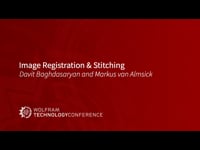 |
Davit Baghdasaryan and Markus van Almsick This talk shows how the improved registration capabilities added to Wolfram Language with Version 12.3 are used to provide powerful image stitching capabilities, including demonstrations of large scans, panoramas, and virtual ... |
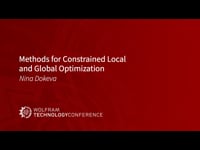 |
Nina Dokeva This talk covers Wolfram Language numerical optimization functions for constrained local and global optimization, how they classify and process the inputs into the form required by different solvers and the ... |
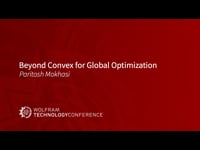 |
Paritosh Mokhasi This talk focuses on generalizations of the convex optimization algorithms that allow us to solve a much broader category of problems. We discuss the construction of generalized convex functions and ... |
 |
Unal Goktas This talk presents an overview of solution methods for partial differential equations (PDEs) in Wolfram Language and how these tools can be used to understand and learn PDEs. This includes ... |
 |
Antti Rasila This presentation addresses numerical computation of harmonic and quasiconformal mappings, which are natural generalizations of conformal mappings. Theoretical background of the method and numerical computation of mappings with Mathematica are ... |
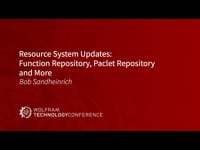 |
Bob Sandheinrich Find out how to both use and contribute Wolfram Resource System content---now including paclets! Demonstrations include navigating the Resource System website, integrating related resource functions into your code and other ... |
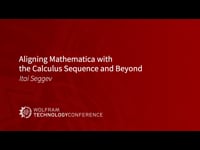 |
Itai Seggev This talk surveys multiple changes made to Mathematica up to this point to make the software an even better tool for introductory mathematics instruction. |
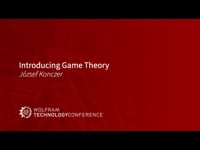 |
József Konczer This talk introduces the basic concepts of game theory framework and how they have been implemented in Wolfram Language. The presentation includes proposed construction, visualization and solution methods for various ... |
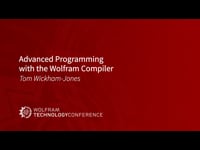 |
Tom Wickham-Jones The Wolfram Compiler converts Wolfram Language into native machine code and provides a faster execution path as well as many opportunities for innovative programming features. This talk covers advanced programming with the Wolfram Compiler, focusing on performance computing and showing the latest features that work ... |
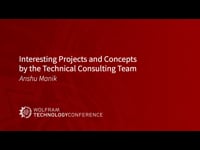 |
Anshu Manik Wolfram Technical Consulting leverages Wolfram tech to automate processes, design and train new machine learning/AI models, develop custom applications, implement innovative algorithms, and run deep data analysis. Here, we ... |
 |
Oliver Reubenkoenig This talk demonstrates techniques for setting boundary constraints and boundary loads common in solid mechanics and how they map to Wolfram Language, providing capabilities to build and analyze real-world solid ... |
 |
Brenton Bostick The notebook front end is a great tool for developing Wolfram Language, but there are other editors and IDEs available. This talk shows new integration with Sublime Text and Visual ... |
 |
Charles Pooh |
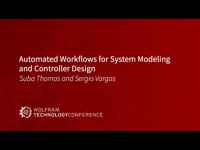 |
Suba Thomas and Sergio Vargas Wolfram Language has been enhanced to better integrate system modeling and automate and streamline subsequent controller design and simulation. This talk presents these developments along with System Modeler application examples ... |
 |
Anton Antonov This presentation discusses designing a conversational agent for data acquisition workflows, an extension of the work on multilanguage data wrangling conversational agents from WTC-2020, including the various facets and subparts. |
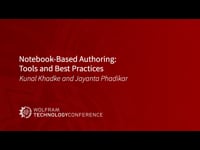 |
Kunal Khadke and Jayanta Phadikar This presentation addresses best practices when creating Wolfram Language notebook-based publications based on processes learned while creating courses for Wolfram U, customer consulting projects and studies of previous notebook-based publications. |
 |
Matteo Fasano and Ankit Naik Wolfram Virtual Labs are open educational resources in the form of interactive course-ware that are used to explain different concepts in the classroom. Presenters demonstrate real-world uses of Virtual Labs ... |
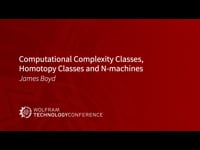 |
James Boyd This presentation examines possible correspondence between computational complexity classes in computational graphs and higher homotopy classes between computability paths via the application of two methods: category theory and Homotopy Type ... |
 |
Todd Gayley and Bob Sandheinrich The Wolfram Paclet Repository is here! See a preview of the upcoming new system for publishing and distributing paclets to Wolfram Language users everywhere. Learn what paclets are and how ... |
 |
Bruno Autin What is an elementary particle? After a brief historical introduction, the approach followed by Richard Feynman is explained using three experiments derived from Young's test of diffraction by two slits. The statistical approach is supported by functions and transformations available in the Wolfram Language. ... |